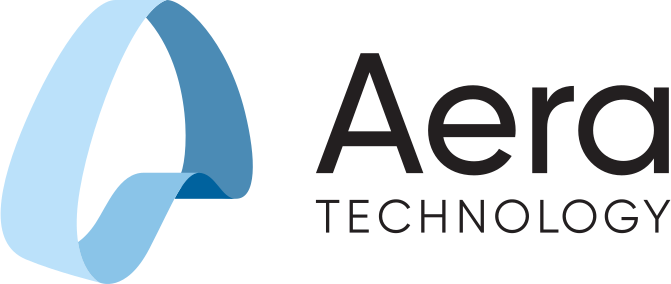Webinar Recap: Introducing Aera with Agentic AI — Decision-Making, Reimagined

Summary
In our Future.Now webinar, "Introducing Aera’s Agentic AI: Decision-Making, Reimagined," we explored how Agentic AI is enabling a fundamental shift in enterprise decision-making. The speakers presented how AI agents — powered by large language models (LLMs), real-time data, and a secure decision data model — can take on increasingly complex business decisions across the enterprise. These agents continuously learn, collaborate, and act, creating a new model for scalable, resilient, and autonomous operations.
The webinar speakers also demonstrated how Aera’s platform allows users to define agent goals and rules, integrate a variety of data sources, select from multiple LLMs, and create chains of agents capable of reasoning together. The capabilities shared span structured and unstructured data handling, secure integration with enterprise systems, and composability that supports rapid development and deployment of AI-powered decision logic.
Key Takeaways
- Agentic AI is enabled through a modular framework
AI agents in Aera are built using reusable components, including structured prompts, a certified decision data model, and agent functions such as SQL or Python snippets, internal models, or workflows. - Decision variability is reduced through design and memory
Aera minimizes inconsistent outputs from LLMs by using tightly defined prompts, structured data inputs, durable audit trails, and tool-based functions that guide agent behavior. - Flexible integration is supported across enterprise systems
Data can be ingested via APIs, middleware, bidirectional crawlers, or manual uploads, and Aera integrates easily with tools like SAP, Blue Yonder, and data lakes. - Scenarios can be modeled rapidly for planning and optimization
The platform supports what-if analysis, including complex use cases like multilevel BOMs, nested supply networks, headcount planning, and warehouse optimization. - Deployment at scale is enabled by high composability and parallelism
Aera supports fast time to value, with real-world deployments as fast as 8–12 weeks, and includes features like explainability, human language interfaces, and collaborative agent teams. - Security and compliance are deeply embedded
Aera meets SOC 2 Type II, ISO 27001, and GDPR requirements, and supports data encryption, access control, and continuous monitoring for enterprise-grade protection.
Speakers
 |
Suraj Ramalingam, Solution Engineer, Aera Technology Suraj brings extensive experience in global supply chain management, having held senior roles at Salesforce and Procter & Gamble. At Aera, he focuses on enabling customer success through technology-driven transformation. |
 |
Ram Krishnan, SVP, Platform Product Marketing, Aera Technology Ram leads the GTM strategy for Aera Decision Cloud with over two decades of experience in enterprise, software, product strategy and customer success. RAM brings a deep understanding of how to align solutions with customer values. Under his leadership, Aera has earned a strong reputation for delivering measurable business outcomes and customer satisfaction. |
Full Recording
Q&A
Q: If LLMs have a problem with repeatability, how does using the same LLM in an agent solve this problem? How does it self-generate logic?
A: Because this is all based on LLMs, the same input may not yield the exact same output every time. Even with the same LLM and prompt, outputs can vary due to randomness controlled by LLM parameters, such as thresholds. The way we address this at Aera is through a four-fold approach:
- Prompts: The ability to provide tight prompts during agent definition reduces variability of outputs.
- Decision Data: Data is directly from the Decision Data Model (DDM), which is certified by you, the customer. This ensures the input parameters are durable.
- Audit Trails: The agents and agent teams have clear audit trails throughout the process. This memory helps develop consistency.
- Agent Functions: Agent functions (tools available to agents in Aera) can be code snippets (e.g., Python or SQL), part of a process flow (e.g., forecasting order quantity for the next x period), or access to Aera internal models. This function SDK helps agents clearly understand the available capabilities they can leverage.
Q: Can Aera be used for dynamic headcount planning for warehouse resources or to automatically optimize the warehouse storage strategy?
A: Great question. And yes, the combination of AI agents and What-if Scenario modeling can help organizations plan resources and optimize within those resources. The agents are very configurable, so you are able to define the agent to do these tasks while giving it guardrails to ensure that it follows your business rules.
Q: How can we choose which LLM will be perfect for a certain agent? Also, based on complexity, are SQL-based queries or atomic APIs better? How do we make good decisions here?
A: Another great question. Aera allows you to choose the LLM, so it can change based on the definition of the agent. You can have multiple language models available. Your second question varies based on the complexity, as you said. The good news is that Aera will allow you to do either query. In general, Aera will help guide you based on the use case, but you have options depending on the situation.
Q: What’s currently top of mind for me is how Aera can be used for analyzing and forecasting performance in a business providing services. Is Aera capable of evaluating KPIs on employee, department, and office levels to produce actionable decisions on how to cut costs or increase revenues? And if yes, is it capable of statistical modelling for financial forecasting? (e.g., regression analysis)
A: Yes. Aera is capable of evaluating KPIs and producing actionable decisions on how to cut costs and increase revenues. AutoForecasting is available out of the box in Aera Decision Cloud. Capabilities include time series forecasting, regression/classification, clustering/segmentation, optimization integration, explainability, and more.
Q: How quick is the calculation of decisions?
A: It depends on how quickly the input data can be updated and how complex the calculation is. If source data is updated in near real time (i.e., order management), Aera can calculate decisions right away. If the calculation is more complex, like optimization, Aera can perform that once or more per day. We are happy to discuss each use case and give a more concrete answer.
Q: I see a number of systems you have as integral — Blue Yonder isn’t there. Is that a problem or can it be added?
A: Blue Yonder is available, and Aera has integrated with Blue Yonder several times to both ingest data and write back transactions.
Q: Thanks for the presentation and demo. My question and concern is about data security. Since it is necessary to share enterprise data, how does the solution with multi-agentic intelligence ensure the company's data is protected?
A: Aera Technology maintains a rigorous security and compliance framework aligned with leading industry standards, including SOC 2 Type II, ISO 27001, and GDPR. The platform enforces data encryption in transit and at rest, role-based access control, continuous monitoring, and secure development lifecycle practices. Aera’s cloud-native architecture supports logical tenant isolation, with security policies reviewed and approved by executive leadership. The company conducts regular third-party audits, penetration testing, and vendor risk assessments to ensure the highest levels of data protection and regulatory compliance across global deployments.
Q: Is Aera at a maturity level where AI Agents can communicate with each other to enhance decision making? For example, can a tariff agent communicate its rationale to the purchasing agent?
A: Yes, agents are designed to work in teams and collaborate with other agents. One agent’s output can be the input or trigger for another agent, or agents can work in parallel on a complex decision flow.
Q: What is the complexity limit? If you had 4,000 customer accounts that have various pricing structures and assumptions, would it be possible to set the first agents from scratch and then teach agents to set others?
A: Aera’s engines are elastic. This means we can easily bring up compute to handle complex analytical loads (e.g., execute forecasts at the lowest grain, which can easily reach a million grains), and bring the compute down once the job is complete. Internally we leverage several techniques (such as optimization, analytical processing, in-memory columnar computations, modeling, etc.) that allow you to choose the right engines for the right problem.
Q: Is there an Agentic AI writing certification available that organizations can use to upskill talent?
A: Yes, that is currently being developed by our enablement team and we will be sharing it when it is available to all of our customers and prospects. We will follow up on timing and share in the webinar follow-ups.
Q: With unstructured data, can Aera feed back structured data into a data lake?
A: Yes, data can be written back into data lakes.
Q: A recent article in McKinsey suggested fewer than 10% of vertical AI use cases make it past the pilot stage. How does Aera’s specific approach address this fundamental scaling challenge?
A: Our platform has a high degree of composability and parallelism. This means that multi-teams can come together and work on different aspects of AI and decision intelligence programs simultaneously. That enables rapid time to value and ensures the output is immediately productive. We have seen DI deployments as fast as 8–12 weeks to QA and quickly to production thereafter. Aera’s UX is very intuitive and exposes decisions/recommendations via a human language interface. This enables rapid change management and user enablement at a global level.
Q: Is the decision tree provided by the company you are working with, or do you have a standardized template for some of the decision trees since challenges are very similar?
A: We have a framework for decision trees for common decisions that we’ve implemented, such as inventory balancing or demand sensing. Even in those cases, Aera will configure the decision tree to match your organization’s logic. The biggest value of the platform is that Aera will match your decision-making logic and work with you to create a decision tree.






